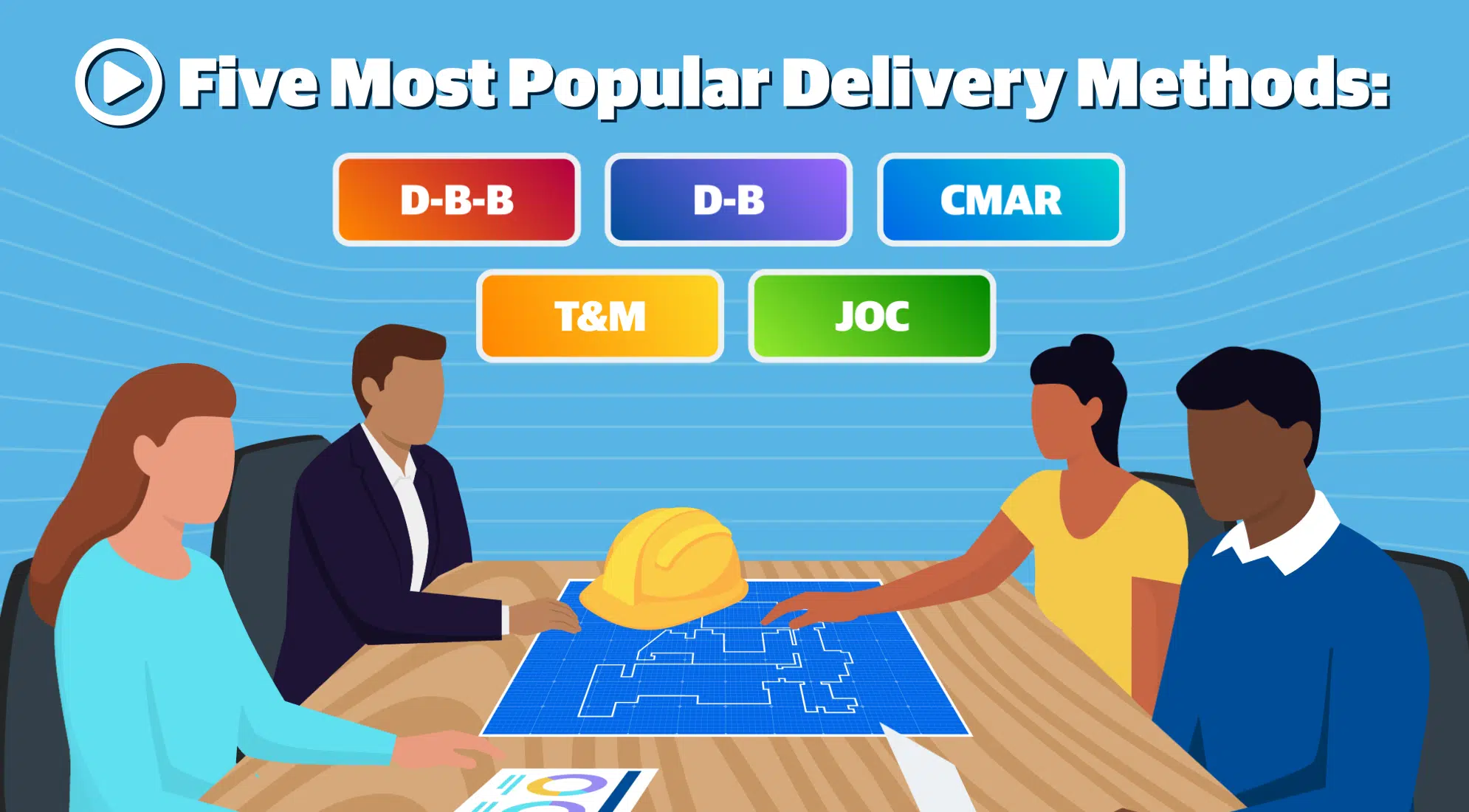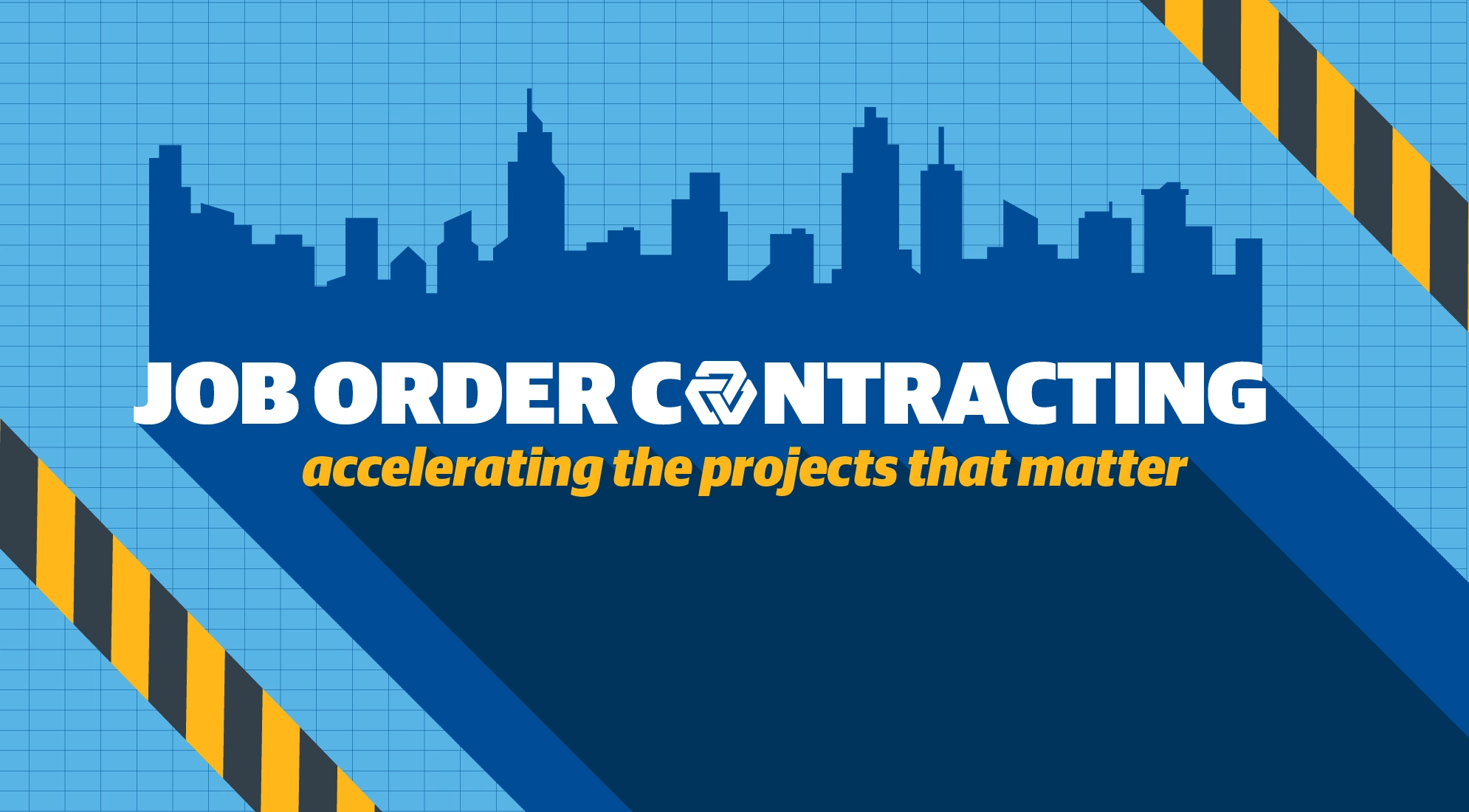Gordian was founded by one of the creators of Job Order Contracting (JOC), and we’ve been perfecting the JOC process for over 30 years. But Job Order Contracting is only one of many methods for procuring construction services. Each one was designed for specific purposes and is best utilized for certain types of projects. Knowing the differences between them and when to use each delivery method can determine a project’s success.
In this series, we’ll compare some of the most widely used project delivery methods, including Job Order Contracting, Design-Build and Construction Manager at Risk. For this post, let’s take a look at Time and Materials.
Time and Materials: The Basics
The Time and Materials (T&M) project delivery method is unique because it allows construction to commence without full knowledge of the project’s timeframe and total budget.
T&M contracts enable owners to base how much they pay for a project on the work they anticipate contractors to complete, rather than waiting to know all project details before work begins. This allows work to begin with more ease but also requires owners or their representatives to spend significant time reviewing contractors’ billable hours and materials used throughout the project to ensure contractors are accurately paid for the work they complete. The T&M method is probably right for project owners who are comfortable sacrificing time throughout the project’s construction for the ability to get the project off the ground more quickly.
See how five of the most common project delivery methods compare here.
A T&M contract is created by first determining the approximate scope of the project, then agreeing on a fixed hourly wage for the work plus the total cost of materials. Additionally, owners and contractors will agree on maximum labor hours and maximum total project cost. This protects the owner’s interests by preventing egregious material and labor cost overruns. Everything else is negotiated as construction is completed, allowing for flexibility when dealing with unforeseen circumstances.

Advantages of the Time and Materials Method
The T&M method may be a viable option for projects that do not have a specified scope and timeline. This is because project owners do not have to spend as much time planning all the details of the project before contacting contractors, as they would with a more traditional project delivery method like Design-Bid or Design-Bid-Build.
The T&M method also allows for greater flexibility while construction is underway. This might be an advantage for projects where owners cannot fully anticipate the project’s scope before construction, like complex renovation projects where unexpected changes might be necessary. Using the T&M method, unexpected work can be completed without amending a rigid contract, saving both parties time and headaches.
See how Gordian’s Job Order Contracting compares to delivery methods like time and materials.
Disadvantages of the Time and Materials Method
One of the disadvantages of T&M contracts is that project owners won’t know exactly what they’ll be paying upfront. This is not only riskier than using fixed-price methods, but it also makes budgeting more difficult. Owners considering the T&M method should consider whether time-consuming confirmation of labor hours and materials throughout construction is a valuable use of their time. The effort expended on this administrative work may not be worth the flexibility.
Because T&M contracts leave room for negotiation during the construction process, owners might be surprised by unexpected labor and materials costs. Though they might have agreed on a maximum total cost, project owners might not be fully prepared for their project to reach that cost. This is one of the risks that owners face and is a good reason to be fully aware of the terms of the contract and prepared for unexpected scenarios.

Comparing the Time and Materials Method and Job Order Contracting
On its face, Gordian’s Job Order Contracting might sound similar to Time and Materials because JOC is an Indefinite Delivery Indefinite Quantity (IDIQ) construction procurement method. However, this refers to the indefinite delivery and quantity of many separate projects, instead of the indefinite terms of a single project. Using JOC, qualified local contractors can complete an indefinite number of projects through one competitively-awarded contract. This benefits both parties by allowing project owners to complete multiple projects using a single solicitation process and providing good contractors with more business.
While not every detail of every JOC project is ironed out beforehand, once a project is awarded, owners, contractors and Gordian representatives collaborate clearly define the parameters of the project beforehand at a Joint Scope Meeting. Once a Detailed Scope of Work is agreed upon, contractors develop a Price Proposal that lists each task required to complete the project. Gordian then reviews the Price Proposal to ensure it includes all necessary tasks and nothing more. This review saves an average of 6% in hard construction costs and protects contractors by confirming they’ve included all work they should be paid for. Unlike T&M projects, which proceed with a lot of uncertainty, JOC projects are expertly scoped and priced before work begins, giving owners an extra layer of transparency and the power to budget more accurately.
Learn the ins and outs of a Gordian JOC program and how it can help you accelerate the projects that matter in our “JOC 101” video series.
If time is of the essence and the budget is flexible, owners may consider the Time and Materials method knowing that work will begin quickly and they will not exceed a maximum project cost. However, owners who have a more fixed budget and desire transparency may better off using Gordian’s JOC for project delivery.





